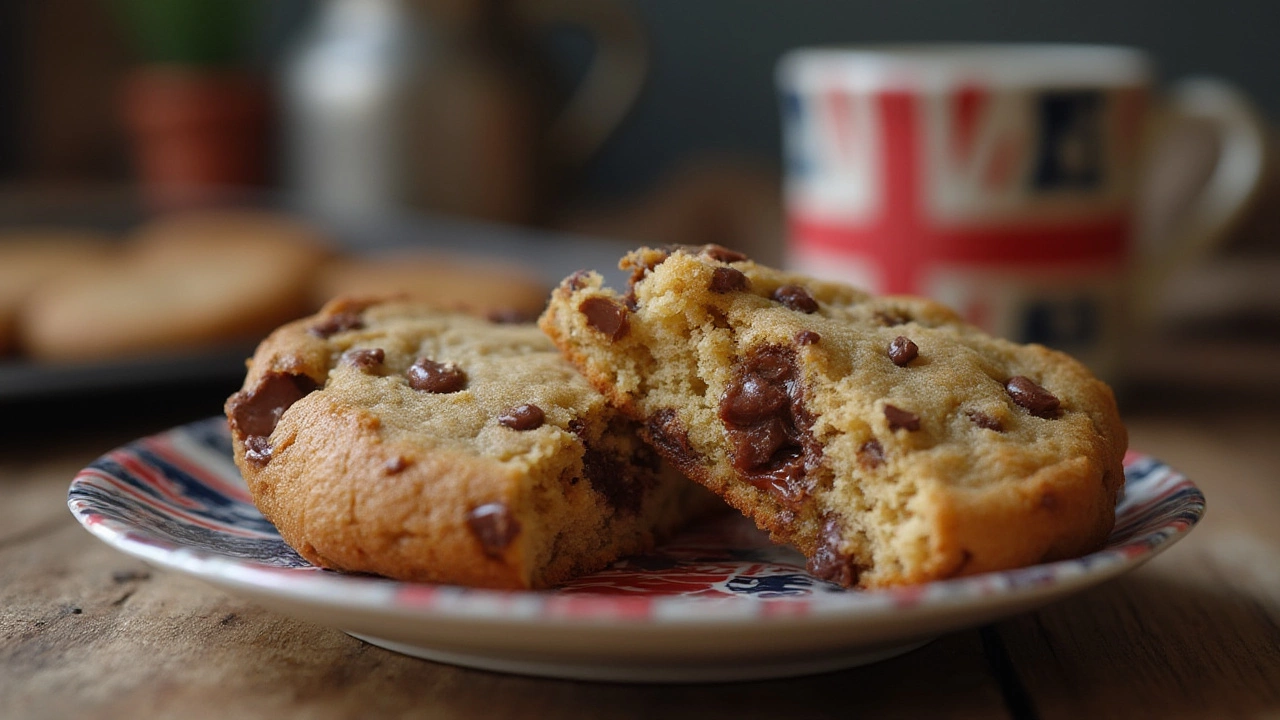
There’s something magical about sinking your teeth into a perfectly soft and chewy cookie. It’s the kind of treat that makes you nostalgic for afternoons at grandma’s house, or those bakery cookie cases beckoning you with fluffy pillows of chocolate chip goodness. But so often, our homemade efforts turn out crunchy or dry, with not a hint of that dreamy softness. You’re not alone. Even seasoned bakers sometimes end up with cookies that could double as hockey pucks. Why do cookies harden up? And what can you tweak to serve up cookies that stay irresistibly soft, all day (or, let’s be honest, until they’re gone)?
The Science Behind Cookie Softness
Cookies—simple as they seem—are a lesson in chemistry. The texture is all about how the fat, flour, sugar, and eggs interact. When you pull a batch from the oven and find them rock-solid, it means something in those ingredients (or your technique) tipped them away from softness. The main culprit? Moisture. Soft cookies trap and hold moisture long after cooling, but get rid of too much, and you’re left with a cookie that snaps instead of bends. Butter or shortening acts like a trampoline, giving cookies a tender crumb. If you swap it for oil or margarine, you’ll notice changes, since those fats don’t solidify the same way during baking.
Also, the type of sugar matters more than you might think. Brown sugar is hygroscopic—it grabs and holds onto water. That’s why classic soft chocolate chip cookies often use a blend of brown and white sugar, but lean heavier on the brown. The molasses in brown sugar isn’t just there for the flavor; it’s your new best friend for chewiness. White sugar brings crispiness. Want pillowy cookies? Stick with more brown sugar, or go all-in if you like a hint of caramel.
Eggs add structure, but use too many and your cookies puff up and go cakey, which isn’t quite the same as soft. Utilize just enough egg—usually one or two for a standard batch—and don’t overmix your dough. A simple whisk until combined keeps the gluten in your flour under control. Gluten is the protein network that gives bread its bounce but makes cookies tough if you go overboard. Flour type matters, too. It’s tempting to reach for bread flour because you think it’s ‘stronger,’ but resist. All-purpose flour provides enough body without sacrificing tenderness.
There’s also temperature to think about. Chilling your dough slows down the spread, which means thicker, richer cookies that are soft inside. But if you let the dough sit at room temperature, the cookies thin out and, you guessed it, harden up. A study published by Cook’s Illustrated found that chilling chocolate chip cookie dough for at least 24 hours hydrates the flour, letting the cookies bake up thick, soft, and flavorful.
Here’s a quick glance at how ingredients affect softness:
| Ingredient | Effect on Softness |
|---|---|
| Butter | Soft, tender crumb (if creamed) |
| Brown Sugar | Adds moisture & chewiness |
| White Sugar | Creates crispiness |
| Egg | Gives structure; too much = cakey |
| Baking Soda | Encourages spreading, softer texture |
| Baking Powder | Makes cookies puffier, can dry out |
| All-Purpose Flour | Balances structure and softness |
Mixing, Measuring, and Method: Little Tweaks with Big Results
Baking is famously precise, so it’s no surprise that the way you mix and measure matters nearly as much as the ingredients themselves. First up—measuring flour. Most home bakers scoop right from the bag with their measuring cup, but that packs a lot more flour than you’d guess. Too much flour means dry dough, and dry dough never bakes up soft. Instead, fluff your flour first, spoon it into the cup, and level off with a knife. Or grab a kitchen scale; most food pros swear by it for accuracy. Just 15 grams too much can make a difference in chew factor.
Mixing is its own potential pitfall. Once you add flour, stir only until you can’t see it anymore. Over-mixing toughens the dough, especially in recipes that use gluten-forming flours. You want cookies, not chewy bagels. Get creative with mix-ins as well—oats, shredded coconut, or dried fruit help lock in softness by attracting moisture.
Baking time is the sneakiest part of all. Cookies should come out when they look slightly underdone in the center but golden at the edges. Ignore that urge to let them brown all over! They finish setting up as they cool on the baking sheet. If you wait until they look perfect in the oven, you’ll end up with overbaked rocks. A test batch is never a bad idea if you’re unsure how your oven runs, as some bake hotter or cooler than the dial says.
One more tip: swap in a bit of cornstarch for some of the flour. Cornstarch softens the texture, thanks to its anti-gluten powers, and gives that melt-in-your-mouth effect. About a tablespoon per cup of flour is enough to notice a difference.
It’s also easy to forget about oven placement, but where you bake your cookies changes everything. Always use the center rack for the best air flow and even baking. Don’t crowd the baking sheet; give cookies plenty of space. They need room to spread and puff, which is part of why bakery cookies always seem higher and softer than your crowded home pan.
"Proper dough chilling and accurate measuring are the difference between soft, bakery-style cookies and ones that dry out by dinner," says Stella Parks, award-winning pastry chef and author of Bravetart.

Smart Storage: Keeping Cookies Soft for Days
Baked the perfect batch? Great, but soft cookies can turn dry fast if you don’t store them right. Air is the enemy of softness. Cookies should be completely cool before you tuck them away—otherwise, you’ll trap steam and get soggy tops or even moldy bits. Once they’re cool, layer them in an airtight container, and if you’re feeling extra, add a slice of white bread. The bread gives up its moisture to the cookies without imparting any flavor, keeping them plush for at least three days. Refresh the bread slice as needed.
If you like to bake ahead, flash freeze cookie balls on a sheet, then stash them in a zip-top bag. Bake straight from the freezer (add an extra minute or two). The slower bake helps cookies stay thick and chewy. Already-baked cookies freeze well, too, but always thaw at room temperature inside a container—not out in the open—so that moisture redistributes as they defrost.
For totally next level storage, try vacuum-sealing baked cookies if you have the gear. Squirreling away batches for snack breaks a week later? Microwave them for five seconds with a glass of water in the microwave (not in the container, obviously), and they will perk right up. Just don’t overdo it—microwaving too long dries out the crumbs faster than you can say chocolate chip.
If you want a flavorful twist, toss in an orange or apple peel for a day or two, then remove it. The cookies absorb a tiny hint of aroma while staying soft. Don’t forget to label what’s in your container if you’re mixing cookie types. Strong flavors like gingerbread or peanut butter might overwhelm simple sugar cookies, and then you’re back to baking again.
Troubleshooting: What to Do When Cookies Turn Out Hard
Even when you follow every tip, sometimes a batch comes out tougher than you hoped. First, don’t toss them! Hard cookies can be rescued. Pop a slice of bread into the container with them, as mentioned earlier. In a few hours, most cookies reabsorb enough moisture to soften up again. If they’re still stubborn, spritz the inside of your container very lightly with water before sealing, or wrap cookies in a barely damp paper towel and microwave for a few seconds.
Think about your last batch—was it overbaked, or was something off about the dough? Baking at too high a temperature can turn cookies hard before centers set. An oven thermometer is worth every penny so you know the real temp inside. Changing brands or types of flour, sugar, or even the size of your eggs can affect results. If a new recipe disappoints, jot down what you used so you can tweak for next time. Maybe double-check that you didn’t swap baking powder for baking soda; they’re not interchangeable and produce very different textures.
Some bakers swap out all the butter for shortening to keep things extra tender, but this dulls the flavor. Instead, use a combo, or just stick with real butter and up your brown sugar. For gluten-free recipes that often bake dry, add a tablespoon of honey or golden syrup for extra moisture retention (this trick works for regular flour cookies, too).
Feel like your cookies are always on the crunchy side? Try dropping your oven temp by 10–15°F (5–8°C) below what the recipe says. A slower bake means thicker, chewier centers and less evaporation of those precious water molecules. And don’t cool them on a wire rack for too long—excess air quickly whisks away what little moisture you have left.
Cookie science might sound fancy, but it’s really about mastering a few small habits. If you want that bakery magic at home, embrace brown sugar, measure with care, chill your dough, and watch the oven clock like a hawk. That next batch will repay you in gooey, melt-in-your-mouth, soft cookie happiness.